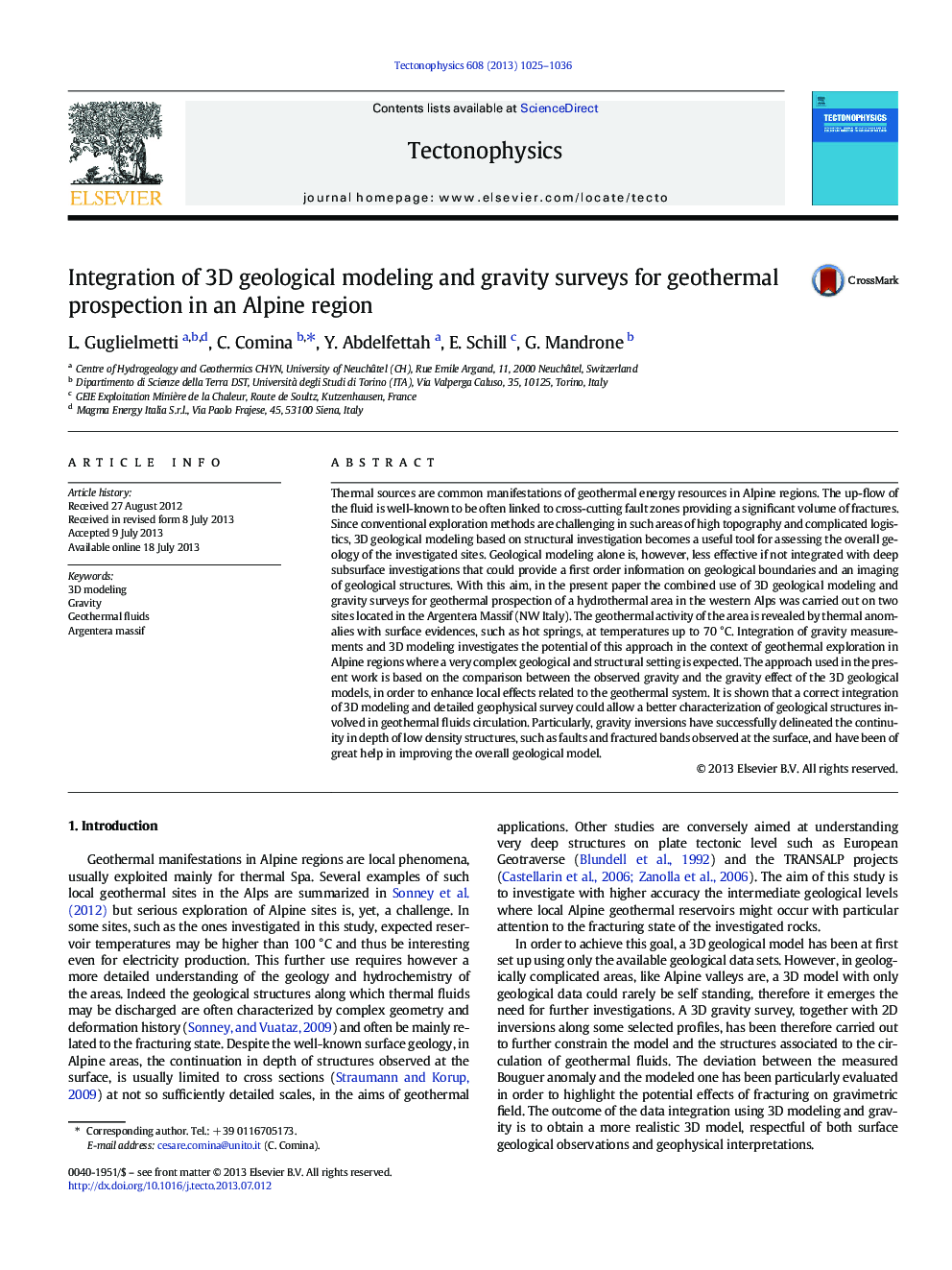| کد مقاله | کد نشریه | سال انتشار | مقاله انگلیسی | نسخه تمام متن |
|---|---|---|---|---|
| 6434033 | 1636779 | 2013 | 12 صفحه PDF | دانلود رایگان |

- Integrates gravity and geologic data to compute realistic 3D models
- Covers a region where gravity data were previously not available
- Emphasizes the importance of 3D modeling for geothermal prospection
- Underlines the effectiveness of 2D gravity inversions in delineating fault zones
- Provides a method which can be applied in all the geological contexts
Thermal sources are common manifestations of geothermal energy resources in Alpine regions. The up-flow of the fluid is well-known to be often linked to cross-cutting fault zones providing a significant volume of fractures. Since conventional exploration methods are challenging in such areas of high topography and complicated logistics, 3D geological modeling based on structural investigation becomes a useful tool for assessing the overall geology of the investigated sites. Geological modeling alone is, however, less effective if not integrated with deep subsurface investigations that could provide a first order information on geological boundaries and an imaging of geological structures. With this aim, in the present paper the combined use of 3D geological modeling and gravity surveys for geothermal prospection of a hydrothermal area in the western Alps was carried out on two sites located in the Argentera Massif (NW Italy). The geothermal activity of the area is revealed by thermal anomalies with surface evidences, such as hot springs, at temperatures up to 70 °C. Integration of gravity measurements and 3D modeling investigates the potential of this approach in the context of geothermal exploration in Alpine regions where a very complex geological and structural setting is expected. The approach used in the present work is based on the comparison between the observed gravity and the gravity effect of the 3D geological models, in order to enhance local effects related to the geothermal system. It is shown that a correct integration of 3D modeling and detailed geophysical survey could allow a better characterization of geological structures involved in geothermal fluids circulation. Particularly, gravity inversions have successfully delineated the continuity in depth of low density structures, such as faults and fractured bands observed at the surface, and have been of great help in improving the overall geological model.
Journal: Tectonophysics - Volume 608, 26 November 2013, Pages 1025-1036